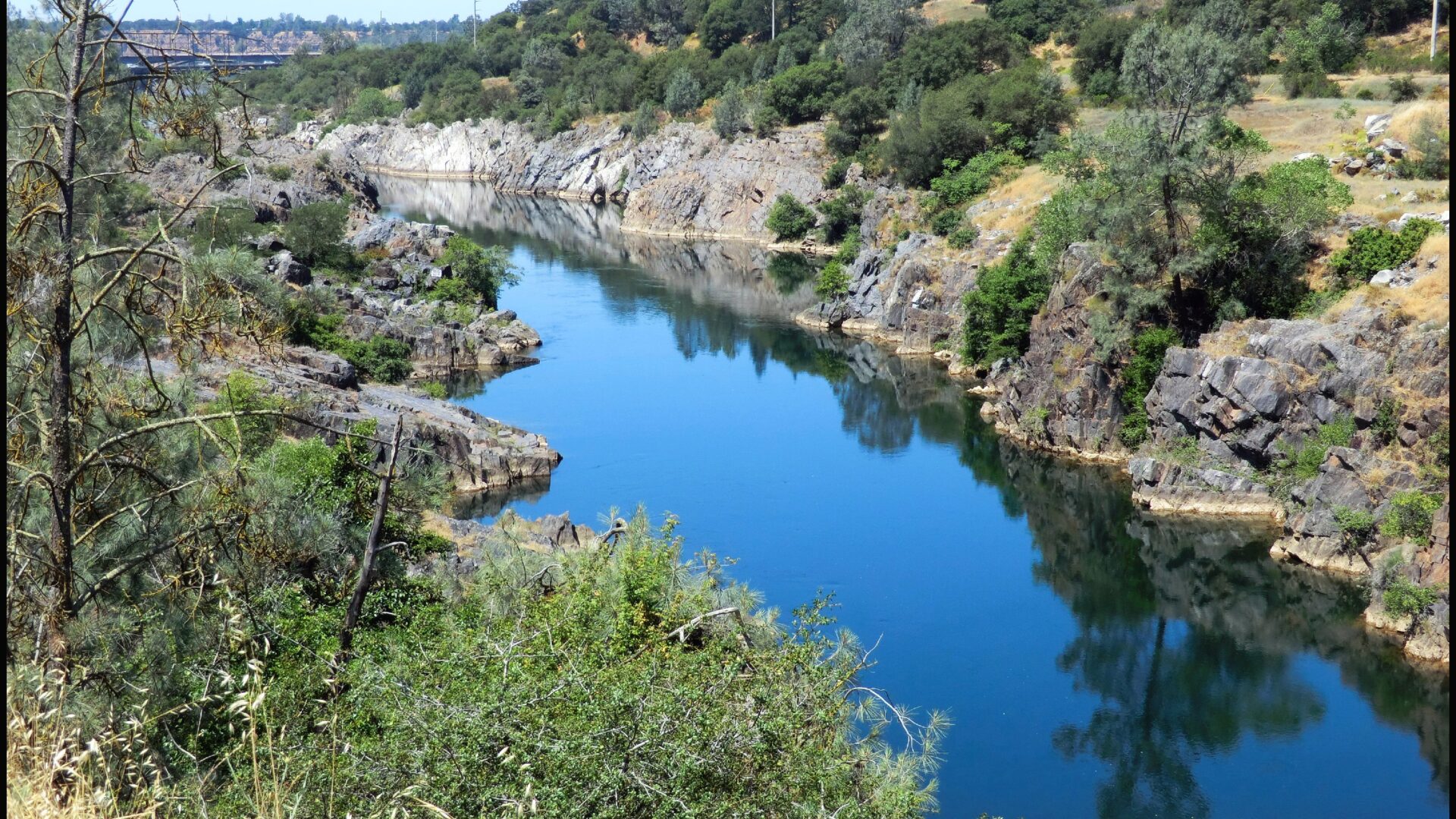By Jessica Law
Winter is historically a time of relative ease for American River salmon and steelhead. The punishing dry months of summer and fall are in the past, and winter storms have returned to cool down water temperatures and provide adequate flow for feeding and spawning. That hasn’t necessarily been the case this winter, which now presents our native fish with a number of new challenges.
In the 2022 water year so far, the river has been hit with a double-whammy of big storms first in October, then in December. January was especially dry, and there is no precipitation in the near-term forecast for February. Meanwhile, in the river, adult steelhead and fall-run Chinook salmon are setting up nests (known as redds), as the spawning and incubation season begins.
All this is a symptom of “weather whiplash,” a rapid shift from drought to wet and back to dry weather that is expected to become more common due to climate change. At the Water Forum, we are carefully watching what this means for water supply and the health of the American River.

In October, the American River watershed received a historic amount of early rainfall, bringing Folsom Reservoir out of extreme drought. Another winter wallop during the holidays resulted in the reservoir encroaching 20,000 acre-feet into the flood space at 566,934 acre-feet for the first time since 2019. This was vitally important for water supply in the region: The reservoir added over 200,000 acre-feet of storage in just six weeks.
The Water Forum has no authority over flood-control releases from Folsom Dam which is regulated by the U.S. Army Corps of Engineers and operated by the U.S. Bureau of Reclamation.
During winter, Reclamation is required to maintain 400,000 acre-feet of flood reservation in Folsom Reservoir to accommodate major storms. This helps protect downstream communities like Sacramento from flooding. The Water Forum is working closely with these agencies, providing data and expert advice, to anticipate how this influx of early season rain could affect wildlife and habitat.
Rapid fluctuations in water releases are not necessarily a bad thing. Our analysis has shown that releases under 10,000 cubic feet per second are unlikely to harm redds through scouring or damage to newly constructed restoration sites. Also, limiting such flows to a brief period (one to three days), followed by a gradual reduction, will not necessarily harm salmon and steelhead. In fact, it would more closely mimic natural storm runoff conditions, before Folsom Dam was constructed.
But it is a delicate balance. If flood releases are too high and no additional storms arrive, there could be inadequate water supply to serve homes and businesses, as well as to protect cold-water resources to support fisheries in the fall and summer months. And if redds are too high on the river bed due to temporary high flows, they could be left disconnected from the main channel or high and dry when the river drops after flood releases, and juvenile salmon (fry) could be stranded as well because they are not strong swimmers.
But so far so good. In January, Reclamation dropped release rates from 5000 cfs to 2000 cfs over the course of several days in time to avoid the peak of steelhead spawning and protect storage.
Throughout the winter the Water Forum will be supporting Reclamation’s Folsom Reservoir operations by coordinating information from its members, including: (1) inflow forecasts from Placer County Water Agency and SMUD, whose upstream projects regulate the majority of the basin’s flows; (2) diversion forecasts from area water purveyors; (3) water temperature modeling to support temperature management decisions; and (4) fishery conditions in the river to inform tradeoffs between release decisions.
This winter is an important reminder that, thanks to climate change, we are in a completely different flow regime, where decisions must be made quickly and based on real-time information. The Water Forum is watching closely to support our partner agencies and help provide optimal conditions for fish and water supply in these uncertain times.
Image credit: Darin Reintjes, Placer County Water Agency

